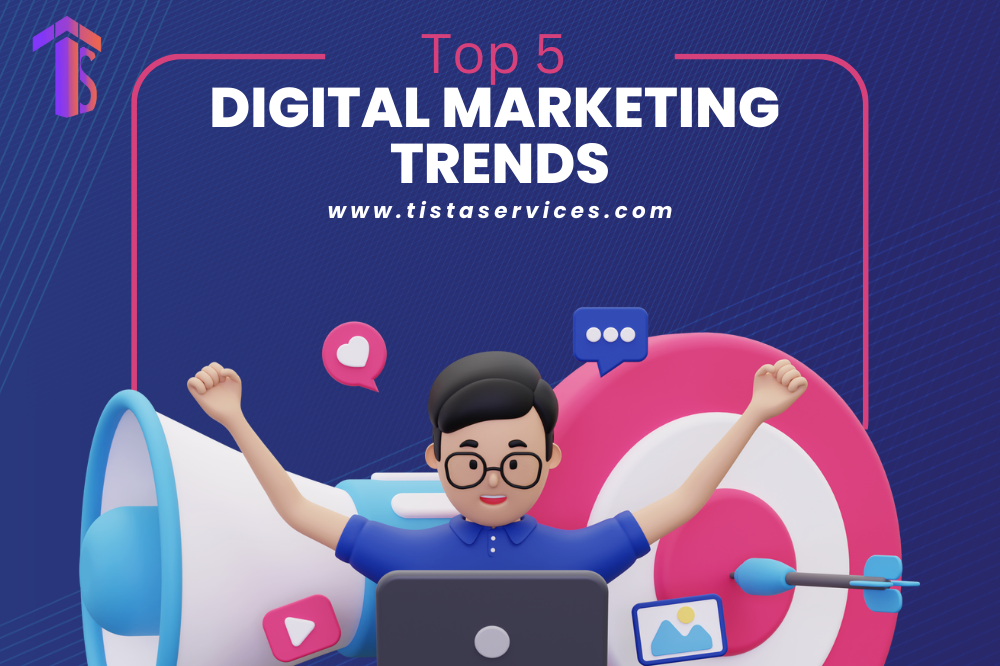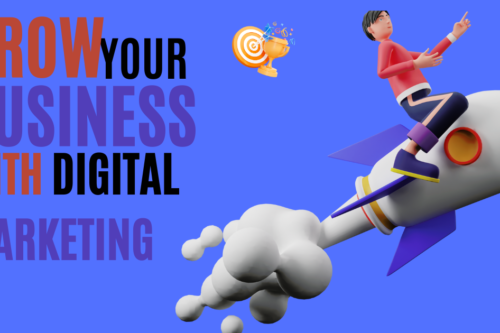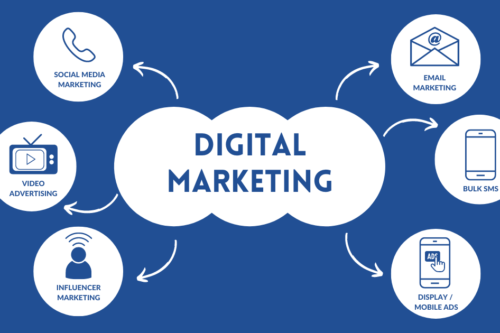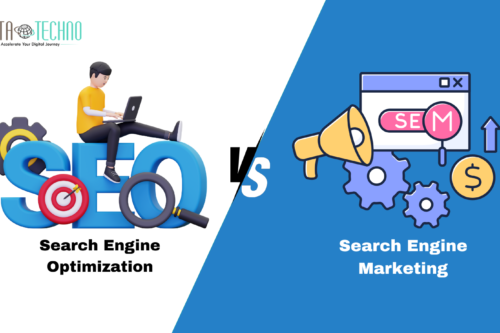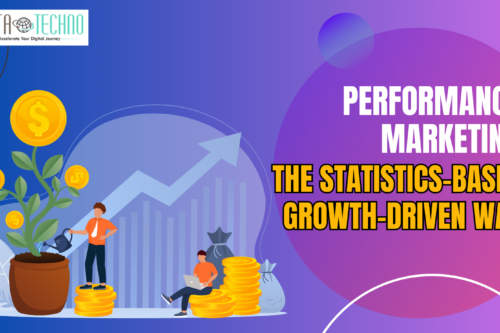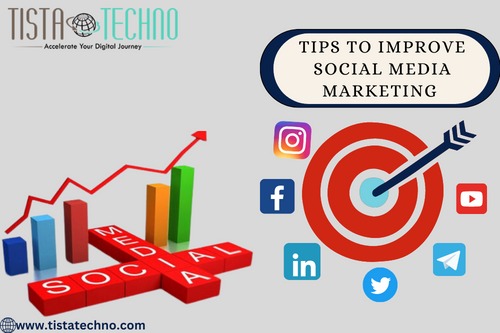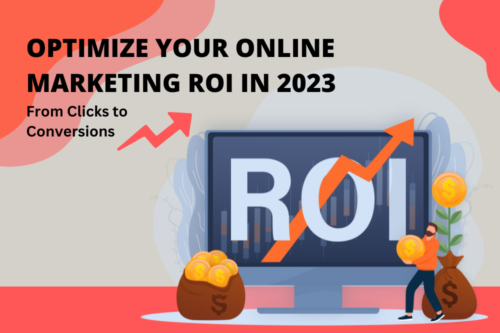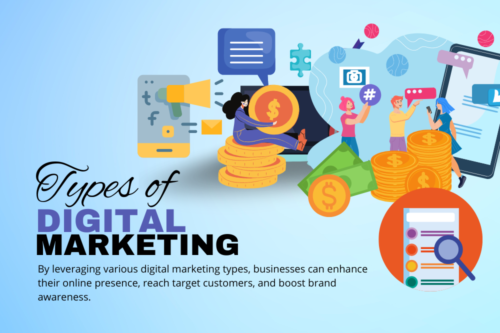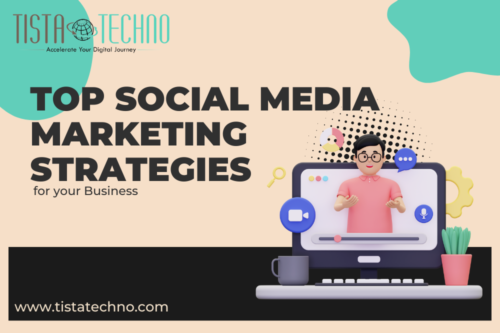In today’s fast-paced digital world, staying updated with the latest digital marketing trends is no longer an option but a necessity for businesses to thrive.
The landscape of digital marketing is continually evolving, driven by technological advancements, changing consumer behaviors, and emerging platforms. As marketers, it is crucial to adapt to these shifts to remain competitive and effectively reach and engage the target audience.
The significance of staying updated with digital marketing trends lies in the following key aspects:
- Relevance: Consumer preferences and behaviors are continually evolving. By staying up-to-date with the latest trends, marketers can ensure their strategies remain relevant to the audience, capturing their attention and meeting their ever-changing needs.
- Competitive Edge: In a highly competitive marketplace, being aware of emerging trends and technologies gives businesses a competitive edge. Implementing cutting-edge strategies can help brands stand out from the competition and position themselves as industry leaders.
- Enhanced Targeting: Digital marketing trends often emphasize personalization and targeted campaigns. By staying updated, marketers can leverage advanced targeting techniques, reaching the right audience with the right message at the right time.
- Optimized ROI: Embracing cost-effective and innovative marketing strategies can lead to a higher return on investment (ROI). Keeping pace with trends allows marketers to allocate resources more efficiently and generate better results.
- Improved Customer Experience: Trends in digital marketing often revolve around enhancing the customer experience. By adopting customer-centric approaches, businesses can build stronger relationships, foster loyalty, and drive repeat business.
Now, let’s delve into the ten mind-blowing digital marketing trends of 2023 that will shape the way brands connect with their audiences and drive success in the digital landscape.
From AI-driven personalization to the rise of social commerce, each trend promises to revolutionize how marketers engage, convert, and retain customers in the ever-evolving digital world. Let’s explore these trends and understand how they can unlock new opportunities for businesses in 2023.
Digital Marketing Trend 1: AI-Driven Personalization
The greatest digital marketing trend in today’s date is AI-Driven Personalization. Artificial Intelligence (AI) is revolutionizing the way businesses approach digital marketing by enabling personalized customer experiences like never before.
With the ability to analyze vast amounts of data in real time, AI-driven personalization empowers marketers to understand individual preferences, behaviors, and needs, thereby delivering targeted content, offers, and recommendations to each customer.
Let’s explore how AI is transforming digital marketing and the importance of data-driven insights in creating personalized experiences:
- AI’s Impact on Digital Marketing: AI plays a pivotal role in transforming digital marketing by automating processes, improving decision-making, and enhancing customer interactions.
- Machine learning algorithms can analyze customer data, such as browsing behavior, purchase history, and social media interactions, to gain insights into individual preferences. This data-driven approach allows marketers to understand customers on a granular level and tailor their marketing efforts accordingly.
- Importance of Data-Driven Insights: Data-driven insights are the foundation of AI-driven personalization. By collecting and analyzing customer data from various touchpoints, marketers can create detailed customer profiles and segmentation. This enables businesses to deliver hyper-personalized content, product recommendations, and offers, making customers feel valued and understood.
- Personalized Content and Offers: AI-driven personalization enables businesses to serve personalized content based on each customer’s interests, preferences, and behaviors. For instance, an e-commerce website can recommend products related to a customer’s past purchases or show content based on their browsing history, increasing the likelihood of conversions.
- Customized Recommendations: AI-powered recommendation engines have become increasingly popular in various industries. Streaming platforms like Netflix and music apps like Spotify use AI to analyze user behavior and suggest relevant movies, shows, or songs. These recommendations keep users engaged and enhance their overall experience.
- Dynamic Website Personalization: With AI, websites can be dynamically personalized in real-time. Content, layouts, and offers can be customized for individual visitors based on their characteristics and interactions with the site. This level of personalization boosts user engagement and increases the chances of conversion.
- Chatbots and Virtual Assistants: AI-powered chatbots and virtual assistants provide personalized support to customers, addressing their queries in real-time. These bots use natural language processing (NLP) to understand customer inquiries and deliver relevant responses, providing a seamless and personalized customer service experience.
- Personalization in Email Marketing: Email marketing campaigns can be significantly enhanced through AI-driven personalization. Marketers can use AI to send personalized email recommendations, subject lines, and content, increasing email open rates and click-through rates.
Digital Marketing Trend 2: Voice Search Optimization
In recent years, voice search has witnessed an unprecedented surge in popularity, transforming the way consumers interact with technology and seek information. With the advent of smart speakers, virtual assistants, and voice-activated devices, voice search has become an integral part of people’s daily lives and also has become a digital marketing trend.
This digital marketing trend has significant implications for digital marketing and SEO strategies. Let’s explore the growing importance of voice search, its impact on SEO, and actionable tips for marketers to optimize their content for voice queries:
1. Growing Popularity of Voice Search: Voice search is rapidly gaining traction due to its convenience and ease of use. With voice-activated devices like Amazon Echo (Alexa), Google Home, Apple’s Siri, and mobile voice assistants, users can perform searches, get instant answers, and execute tasks using voice commands.
As a result, the number of voice searches has surged, reshaping how consumers interact with search engines and digital content.
2. Impact on SEO Strategies: Voice search has ushered in a paradigm shift in SEO practices. Traditional keyword-based SEO is being supplemented by conversational and natural language queries. Marketers must adapt their SEO strategies to accommodate voice search, as it fundamentally alters how users phrase their search queries.
3. Need for Content Optimization for Voice Queries: To effectively leverage voice search, marketers must optimize their content to align with how users naturally speak. Voice queries are typically longer and more conversational, reflecting a question-based format. Hence, content optimization should focus on addressing specific user queries and providing concise, informative answers.
4. Actionable Tips for Voice Search Optimization:
- Use Natural Language Keywords: Incorporate long-tail keywords and phrases that mimic conversational speech patterns. Focus on question-based keywords that users are likely to ask in voice searches.
- FAQ Page Optimization: Create an FAQ (Frequently Asked Questions) page with clear and concise answers to common queries related to your business or industry. This format aligns well with voice search queries.
- Featured Snippets and Position Zero: Strive to achieve featured snippets, also known as “position zero,” in search results. Google often uses these snippets to provide voice search responses, giving your content higher visibility.
- Local SEO Optimization: Voice searches often have local intent, such as “near me” queries. Ensure your business information is accurate and up-to-date on Google My Business and other relevant directories to improve local search rankings.
- Mobile Optimization: Voice search is prevalent on mobile devices. Therefore, ensure your website is mobile-friendly and loads quickly to deliver a seamless user experience.
5. Rise of Voice-Enabled Devices and Consumer Behavior:
- Smart Speaker Adoption: The adoption of smart speakers is on the rise. According to Statista, the number of smart speaker users worldwide is projected to reach over 400 million by 2023.
- Voice Commerce: Voice commerce, or v-commerce, is gaining traction. A study by eMarketer revealed that voice commerce sales in the US are expected to reach $40 billion by 2022.
- Voice Assistant Usage: A survey by PwC found that 65% of 25-49-year-olds speak to their voice-enabled devices at least once a day, showcasing the increasing integration of voice search in daily routines.
- Local Voice Searches: According to BrightLocal’s Voice Search for Local Business Study, 58% of consumers have used voice search to find local business information in the past year.
Digital Marketing Trend 3: Augmented Reality (AR) in Marketing
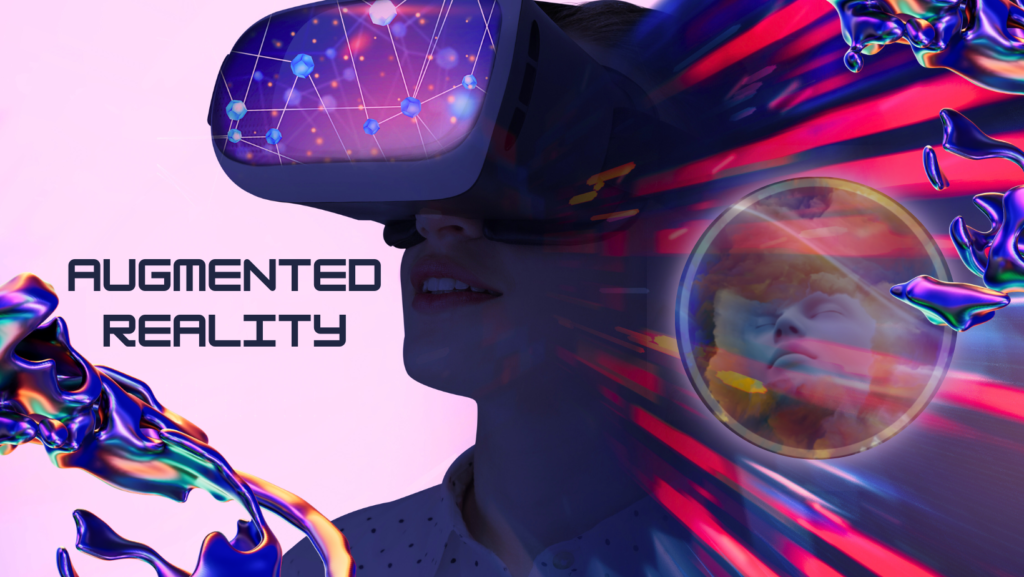
Augmented Reality (AR) has emerged as a game-changer in the realm of digital marketing and has become a top digital marketing trend. It has offered exciting opportunities to engage customers and elevate brand experiences. AR technology superimposes virtual elements into the real world, blurring the lines between physical and digital interactions.
Let’s explore the potential of AR in enhancing customer engagement and brand experiences, highlight successful AR marketing campaigns, and delve into the challenges and opportunities of implementing AR in marketing strategies:
1. Enhancing Customer Engagement and Brand Experiences: AR creates immersive and interactive experiences that captivate consumers, leaving a lasting impression on their minds. By blending digital content with the real world, AR enables brands to showcase products, tell compelling stories, and memorably engage customers.
Whether it’s virtual try-ons, 3D product demonstrations, or location-based AR experiences, customers are drawn to the novelty and excitement that AR brings to their interactions with brands.
2. Successful AR Marketing Campaigns:
- IKEA Place: IKEA’s AR app, “IKEA Place,” allows users to virtually place furniture in their homes before making a purchase. This immersive experience enhances the shopping process and boosts consumer confidence in their buying decisions.
- Snapchat Filters: Snapchat’s AR filters, or “Lenses,” have become immensely popular among users and brands alike. Brands create interactive AR filters that users can apply to their photos and videos, effectively promoting products and generating user-generated content.
- Pokemon GO: The groundbreaking AR mobile game, Pokemon GO, took the world by storm, demonstrating the power of AR in creating captivating experiences and driving user engagement.
- Sephora Virtual Artist: Sephora’s Virtual Artist app uses AR to enable customers to try on makeup virtually, helping them find the perfect products without physically trying them in-store.
3. Challenges and Opportunities of Implementing AR in Marketing:
- Cost and Technical Complexity: Developing AR experiences can be resource-intensive and technically complex. Businesses need to invest in AR development expertise and hardware, which may pose challenges for smaller companies.
- User Adoption: While AR is gaining popularity, some consumers may still be hesitant to embrace the technology fully. Marketers must ensure that AR experiences are user-friendly and provide genuine value to encourage broader adoption.
- Data Privacy and Security: AR applications often collect user data for personalized experiences. Marketers must prioritize data privacy and security to build trust with consumers and comply with regulations.
- Integration with Marketing Strategies: To be effective, AR should align seamlessly with overall marketing strategies and objectives. Marketers must identify appropriate use cases for AR that enhance the brand’s story and resonate with their target audience.
4. Opportunities for Innovation and Differentiation: AR offers a unique opportunity for brands to stand out from the competition and leave a lasting impression on consumers. Creative and innovative AR campaigns can create buzz, generate user-generated content, and drive word-of-mouth marketing.
5. Bridging Online and Offline Experiences: AR has the potential to bridge the gap between online and offline experiences. Brands can leverage AR to enhance in-store experiences, making them more interactive and personalized for customers.
Digital Marketing Trend 4: Social Commerce
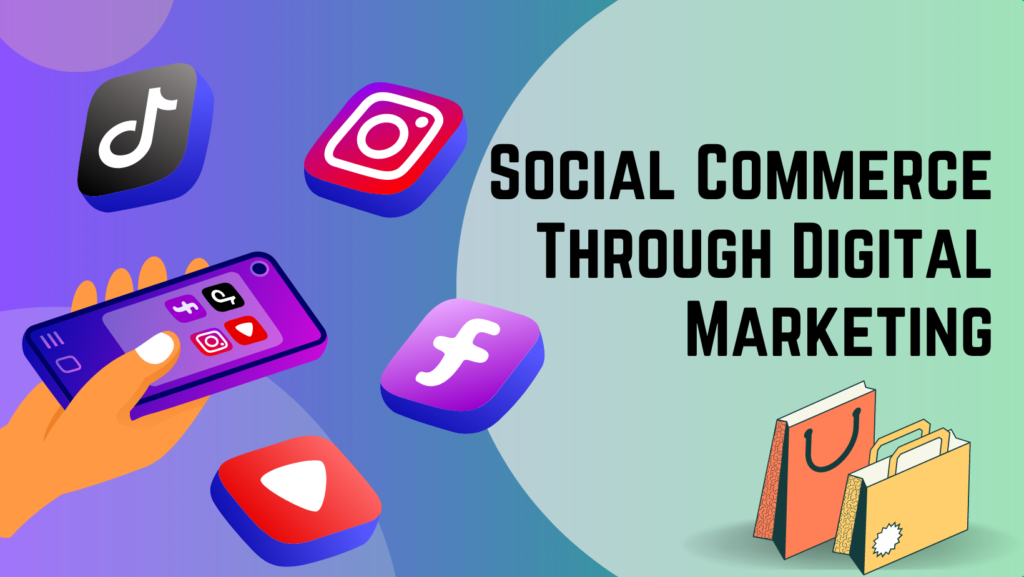
Social commerce is a rapidly growing digital marketing trend that converges the power of social media and e-commerce, reshaping the way consumers shop and interact with brands. With the integration of shopping features directly within social media platforms, social commerce has gained momentum, providing a seamless shopping experience for users.
Let’s examine the convergence of social media and e-commerce, explore the impact of shopping features on consumer behavior, and provide tips for businesses to effectively leverage social commerce:
1. Convergence of Social Media and E-commerce: The rise of social commerce is the result of social media platforms recognizing the immense potential to tap into their vast user bases for e-commerce purposes.
Platforms like Facebook, Instagram, Pinterest, and TikTok have integrated shopping features directly into their interfaces, enabling users to discover, explore, and purchase products without leaving the app. This convergence has blurred the lines between social interaction and online shopping, making the entire experience more convenient and accessible.
2. Impact on Consumer Behavior: Social media’s influence on consumer behavior is undeniable, with users often turning to platforms for product discovery, recommendations, and inspiration. By introducing shopping features, social media platforms have harnessed this influence and transformed browsing into a seamless shopping journey.
Users can now explore products showcased in engaging visuals, access product details, and make purchases with just a few taps, all within their favorite social media apps. This convenience has accelerated impulse buying and encouraged more spontaneous purchases.
3. Tips for Businesses to Leverage Social Commerce Effectively:
- Optimize Product Showcasing: Use high-quality images and videos to showcase products in an engaging and visually appealing manner. Utilize platforms like Instagram and Pinterest to create visually compelling product catalogs.
- Engage with User-Generated Content (UGC): Encourage customers to share their experiences with your products through UGC. Repost or share UGC on your social media channels to build trust and authenticity, as peer recommendations have a significant impact on purchase decisions.
- Enable Social Selling: Train and empower your sales representatives or influencers to sell products directly through social media channels. Personalized recommendations and interactions can significantly impact consumer trust and loyalty.
- Offer Exclusive Promotions: Incentivize social media followers with exclusive discounts, early access to sales, or limited-time offers. This encourages engagement and creates a sense of urgency among potential customers.
- Leverage Influencer Marketing: Collaborate with influencers who align with your brand to promote products through their social media platforms. Influencers’ genuine endorsement can drive interest and conversions among their followers.
- Use Shoppable Posts and Tags: Take advantage of platforms that offer shoppable posts and tags. Tagging products in posts enables users to access product information and make purchases directly from the post.
- Facilitate Smooth Checkout: Ensure a seamless and user-friendly checkout process when users make purchases through social commerce. Minimize steps, enable multiple payment options, and offer guest checkout to reduce friction and boost conversion rates.
Digital Marketing Trend 5: Interactive Content for Engagement
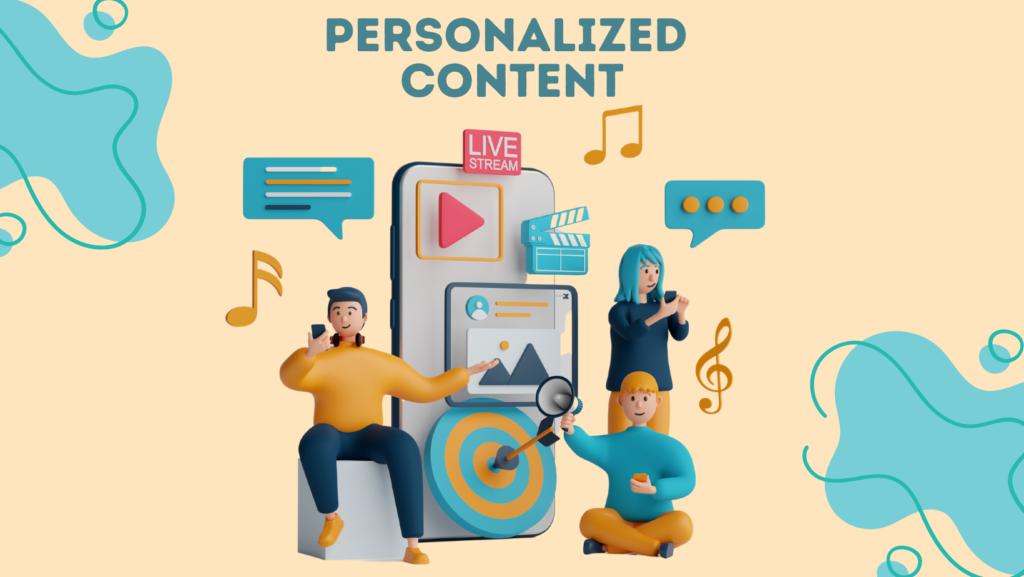
Interactive content has emerged as a powerful tool for digital marketers to captivate audiences, enhance user engagement, and encourage social sharing.
And it happens to be the biggest digital marketing trend. Unlike traditional static content, this digital marketing trend has interactive elements like quizzes, polls, and interactive infographics that invite active participation from users, making the content more enjoyable and memorable.
Let’s explore the effectiveness of interactive content and how it enhances user engagement while encouraging social sharing, along with examples of interactive content that have yielded remarkable results:
1. Effectiveness of Interactive Content:
- Personalization and Relevance: Interactive content allows marketers to tailor experiences based on users’ responses, providing personalized recommendations, insights, or results. This level of relevance boosts user engagement and creates a sense of individual connection with the content.
- Active Participation: Interactive content requires users to actively engage, increasing their time spent with the content and decreasing bounce rates. Users are more likely to retain information presented through interactive experiences, as it involves mental stimulation and interaction.
- Data Collection and Insights: Interactive content provides an opportunity to collect valuable data and insights about users’ preferences, behaviors, and opinions. Marketers can leverage this data to refine their content strategy and make data-driven decisions.
2. Enhancing User Engagement and Social Sharing:
- Entertainment Value: Interactive content taps into users’ innate desire for entertainment and challenges, making it more likely to be shared among friends and followers.
- Emotional Connection: Interactive content that evokes emotions, such as joy, surprise, or curiosity, is more likely to be shared as users want to share these feelings with their social circles.
- Viral Potential: Interactive content has the potential to go viral due to its shareable nature. When users find content engaging and enjoyable, they are more inclined to share it with their networks, extending the reach of the content.
3. Examples of Interactive Content with Remarkable Results:
- Buzzfeed Quizzes: Buzzfeed is renowned for its engaging quizzes that allow users to discover fun and often humorous insights about themselves. These quizzes have become viral sensations, attracting massive social sharing and user participation.
- Spotify’s Wrapped: Each year, Spotify releases personalized “Wrapped” summaries for its users, showcasing their listening habits and top songs. Users eagerly share their Wrapped results on social media, creating a wave of excitement and interaction.
- National Geographic’s Interactive Infographics: National Geographic creates interactive infographics that allow users to explore captivating stories and data visually. These infographics are widely shared across social media platforms, expanding the brand’s reach.
- Twitter Polls: Twitter’s built-in poll feature enables users to create engaging polls that encourage participation and drive discussions. These polls often attract retweets and replies, increasing engagement around the content.
- Playbuzz Interactive Stories: Playbuzz offers interactive storytelling experiences with quizzes, polls, and interactive elements. These engaging stories are frequently shared on social media platforms, amplifying the brand’s reach.
Conclusion
In conclusion, the digital marketing landscape of 2023 is defined by a series of dynamic and transformative digital marketing trends that demand the attention of businesses and marketers alike. In the ever-changing digital landscape, the importance of staying updated and adaptive cannot be overstated.
Marketers must remain vigilant, continuously monitoring industry developments and customer preferences to seize emerging opportunities and mitigate challenges. Embracing these trends can revolutionize marketing strategies, enabling brands to connect with their audience on a deeper level and foster meaningful interactions.
Incorporating these digital marketing trends into marketing strategies will empower businesses to stay relevant, build brand equity, and thrive in the dynamic digital landscape of 2023 and beyond. By embracing innovation and being proactive in adopting these trends, marketers can unlock new avenues for growth, positioning their brands as industry leaders and pioneers in the digital age.
SUGGESTION URL: Beginner’s Full Guide to Google Ads: Boost Your Online Advertising

